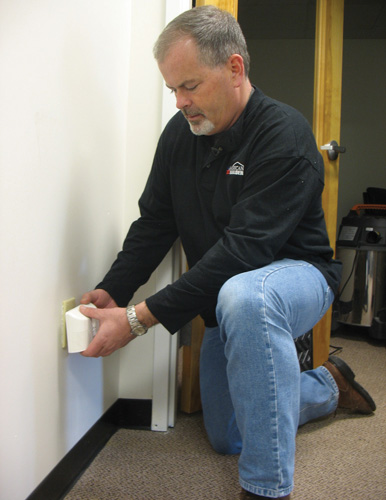Simple Steps to Preventing Carbon Monoxide Poisoning in Your Home

|
Common household mistakes could be making you sick. With symptoms similar to the flu, carbon monoxide poisoning may be misinterpreted and ignored, resulting in deadly consequences. Awareness of common causes of carbon monoxide poisoning and some simple solutions can help keep your home safe.
With no discernable color, smell or taste, carbon monoxide has been deemed the "silent killer" and is the leading cause of poisoning deaths in the United States. According to the Journal of the American Medical Association, there are approximately 2,100 unintentional deaths from carbon monoxide every year in the U.S. Carbon monoxide is the byproduct of incomplete combustion, and can form anywhere a fuel is burned. It can kill in a matter of minutes depending upon the levels of carbon monoxide in the air.
"If high levels of carbon monoxide are inhaled for long durations, it can cause breathing difficulties, brain damage, coma or even death," says Brian Gurry, Master Contractor and host of "American Builder" on CN8, The Comcast Network. "Installing a carbon monoxide detector and taking a few precautions around the house can keep everyone safe."
A professional builder, Gurry frequently encounters homes that have easy-to-fix problems that could result in unsafe levels of carbon monoxide. He offers five simple repairs and precautions that could save a life.
1. Get out of the garage. Today's high-performance vehicles don't need long warm-up times. "Unfortunately, running a car inside of the garage happens all too often by someone in a rush or trying to avoid the elements," Gurry says. If you must warm up the car, do it outside of the garage. When returning home, turn the car off as soon as you drive in to the garage.
2. Give the generator space. Generators produce carbon monoxide and should not be placed in the garage or close to the home. "People lose power in their homes and get so excited about using their generator that they don't pay attention to where they place it. Check the owner's manual and make sure it's far enough from the home so carbon monoxide doesn't get inside," Gurry suggests.
3. Clean the chimney. "Simply brushing the ashes down the chute does not clean the chimney and, in fact, can create a problem," warns Gurry. "The ashes build up and can block other points of connection." To prevent this build-up, open the hatch at the bottom of the chimney and remove the ashes. Gurry recommends this be done weekly along with an annual visit from the chimney sweep.
4. Check vents. Regularly inspect your home's external vents to ensure they are not obscured by debris, dirt or snow. "This is especially important in cold climates, where a couple of feet of snow can easily block a direct vent to a gas fireplace or chimney," says Gurry.
5. Install a carbon monoxide detector. "This is the most important thing you can do to prevent carbon monoxide poisoning — and it's so easy. People install smoke detectors throughout the house and often overlook carbon monoxide detectors," Gurry says. Battery operated models can start at less than $20 and Gurry suggests installing at least one on every floor of the home. If your monitor goes off, Gurry urges, "Get out as fast as you can and call the fire department."
For more household repair, improvement and construction information from Master Contractor and Emmy Award-winning host Brian Gurry, tune into "American Builder," with back-to-back episodes airing weeknights from 6:00 to 7:00 p.m. exclusively on CN8, The Comcast Network. Unlike conventional improvement shows, "American Builder" is not staged for television and follows real world projects on the job site from start to finish. To learn more about "American Builder" or to watch the show online, please visit www.CN8.tv. CN8 is the nation's preeminent regional 24-hour cable network, producing live, original and interactive programming covering the worlds of sports, politics, personal finance, issues, entertainment and more.







